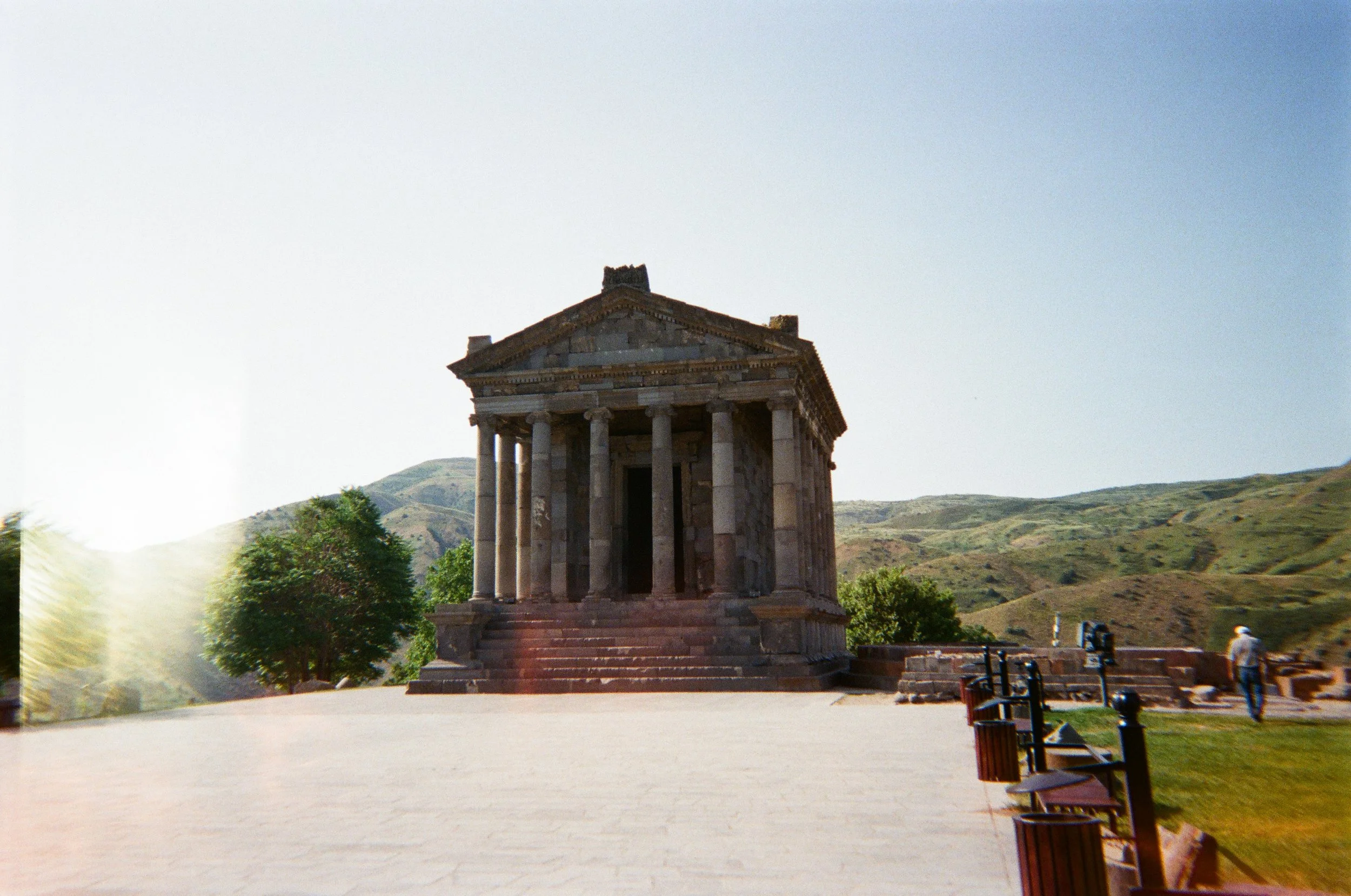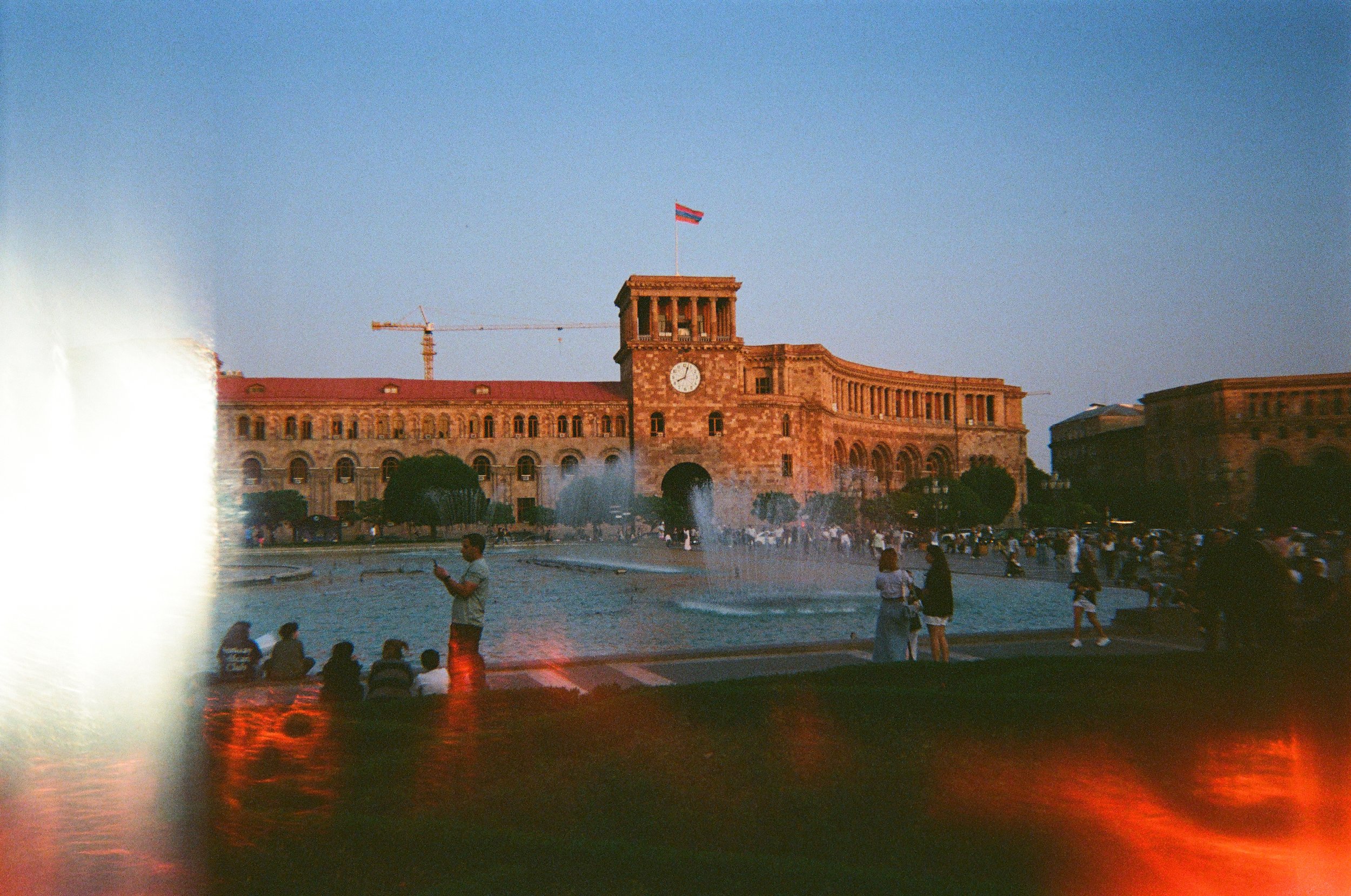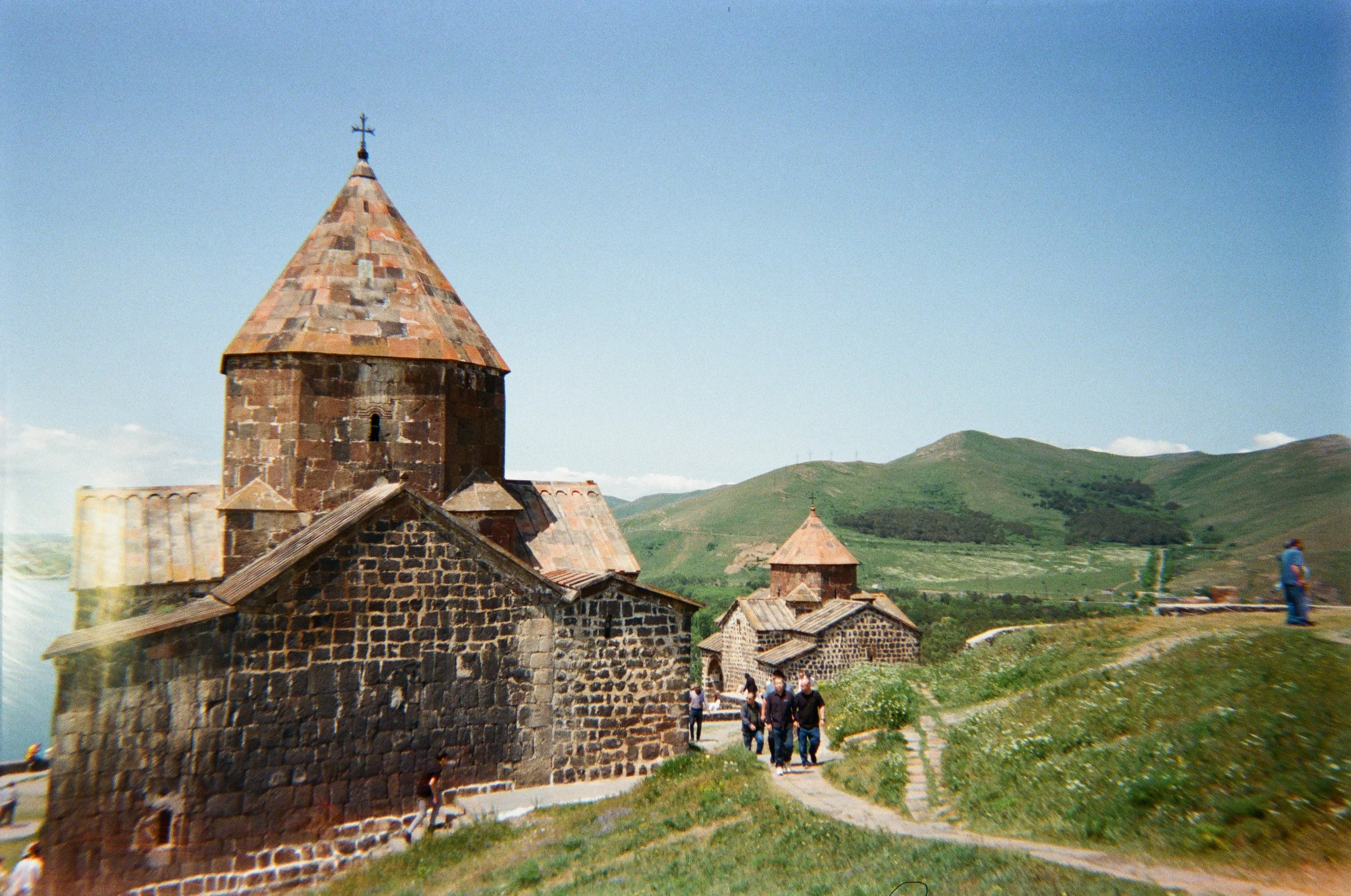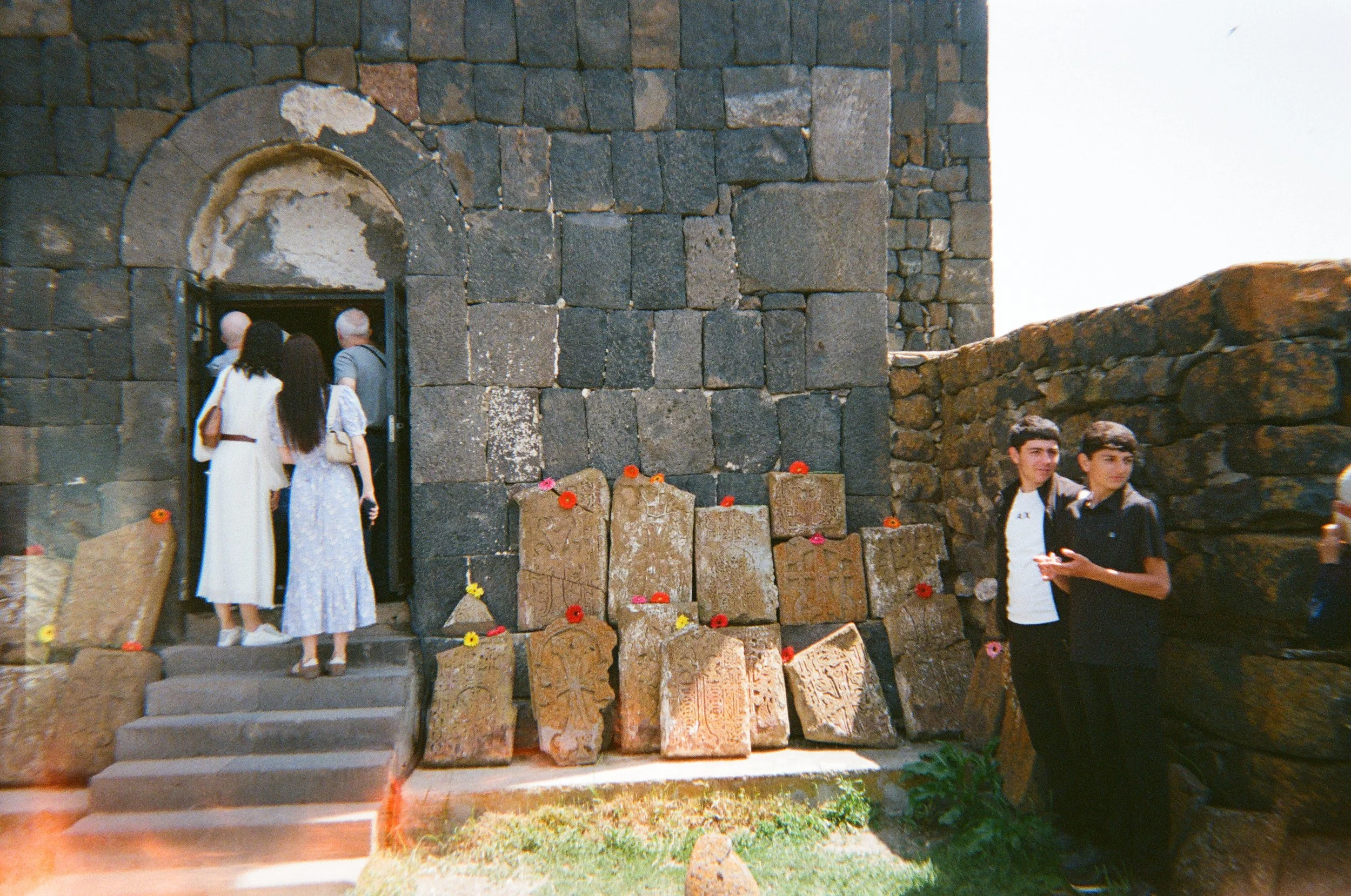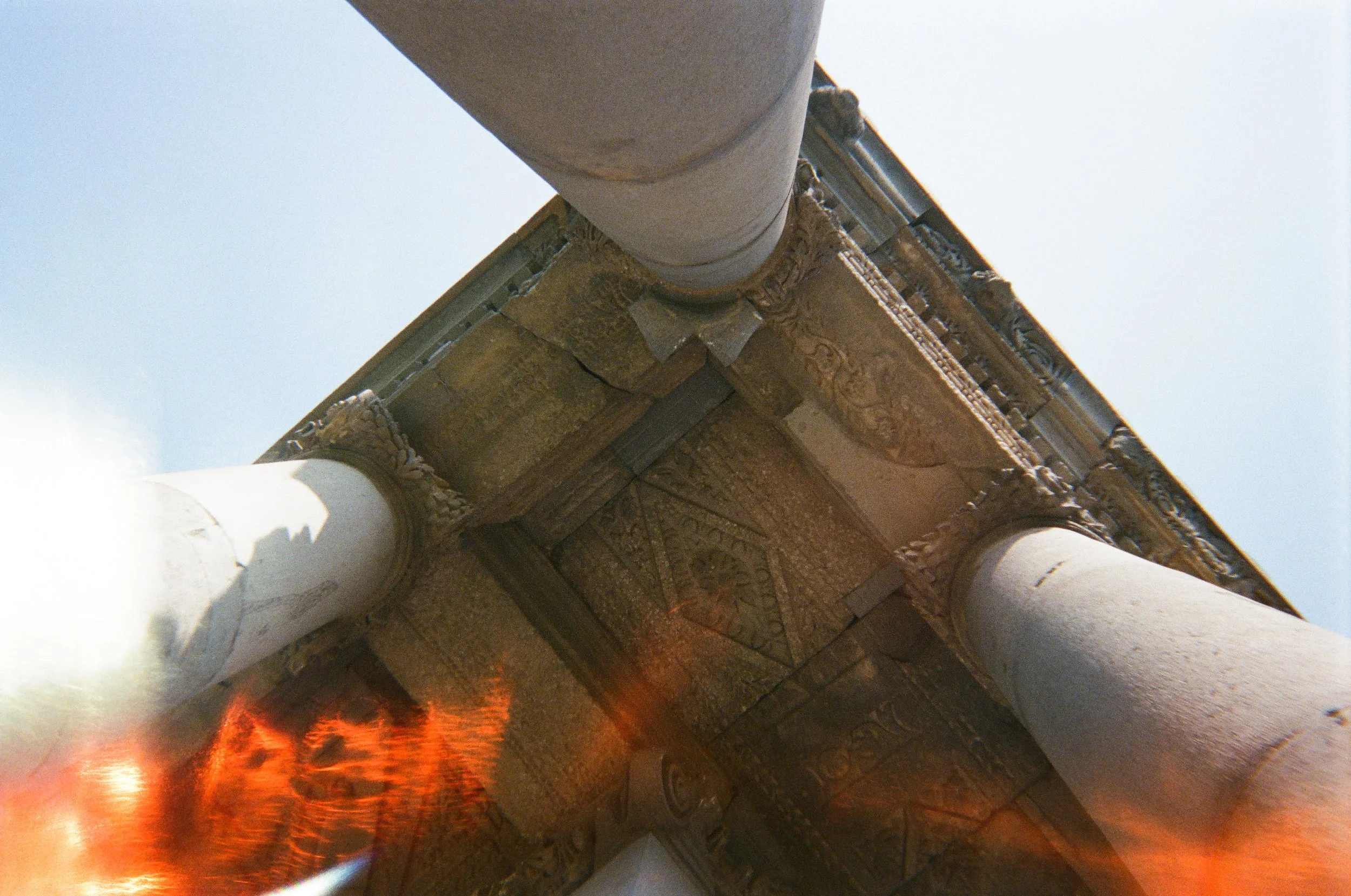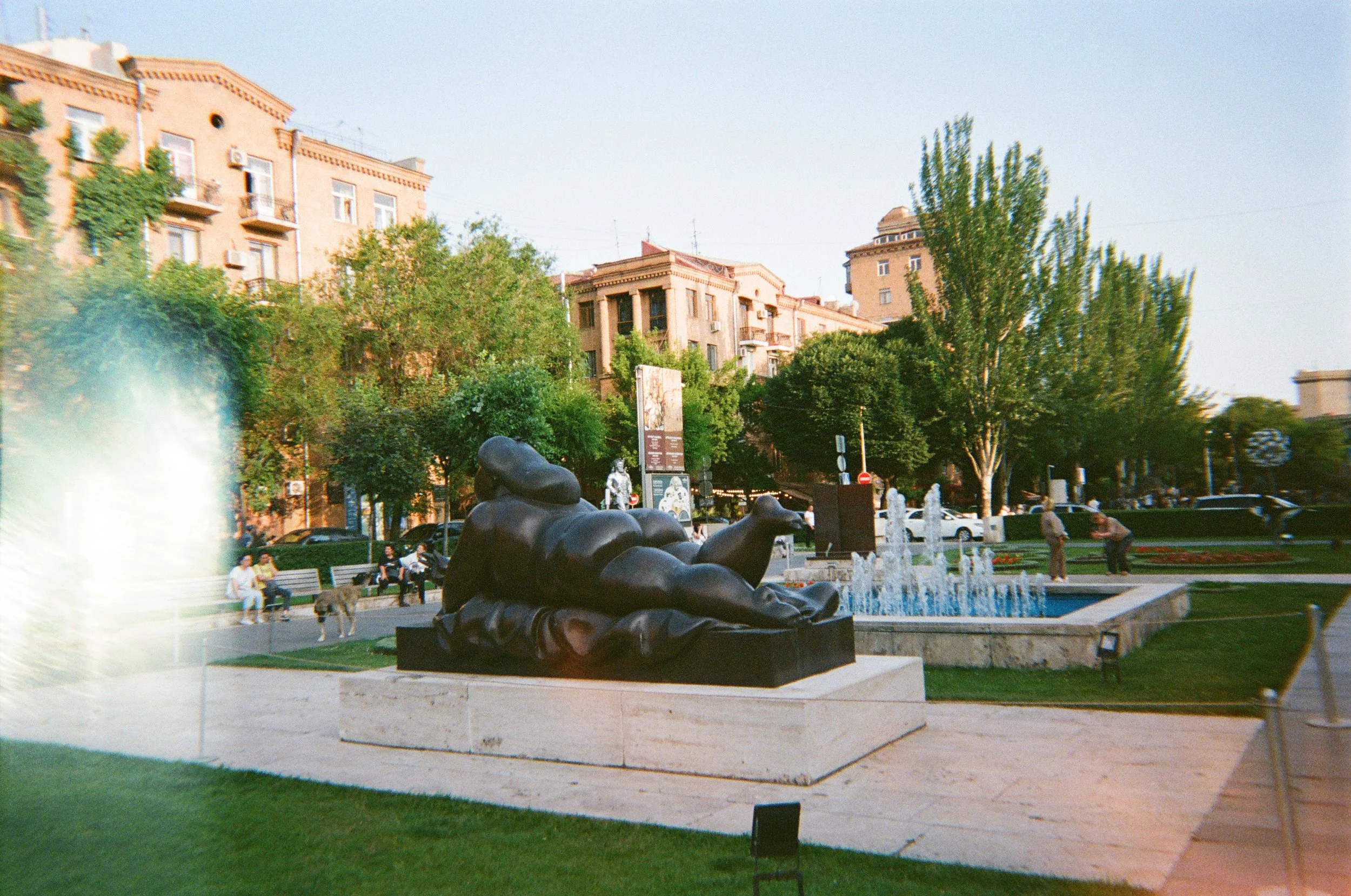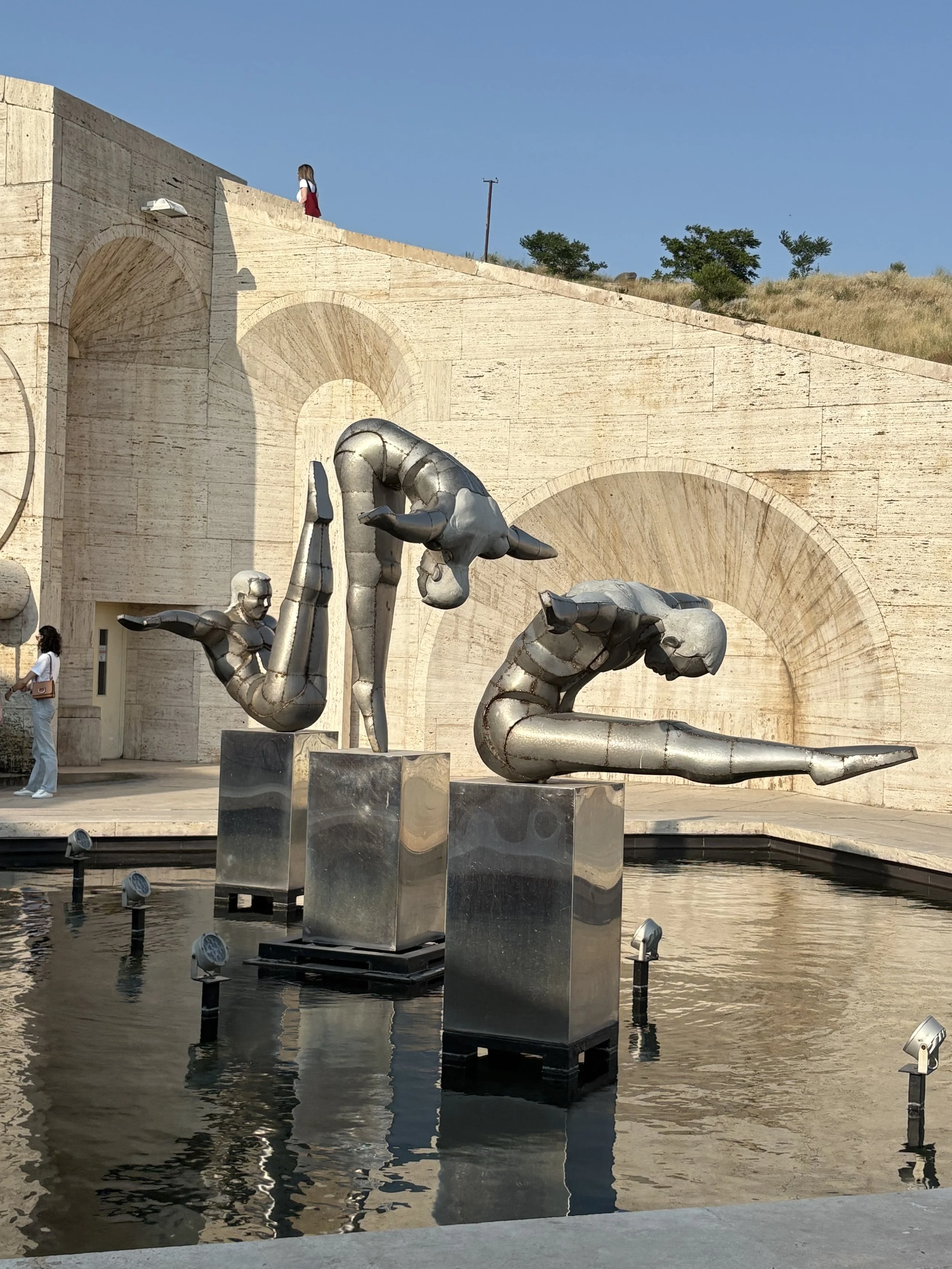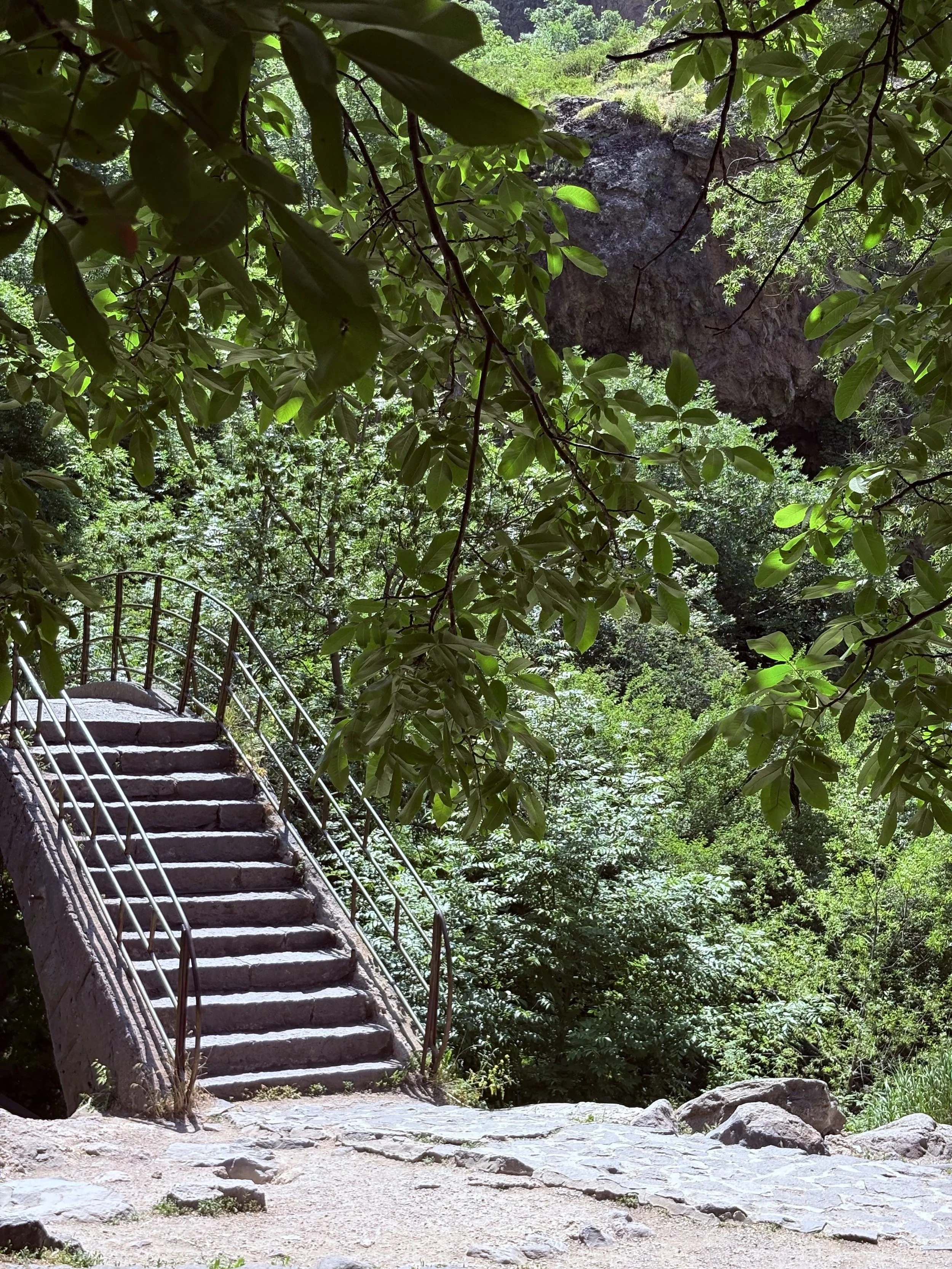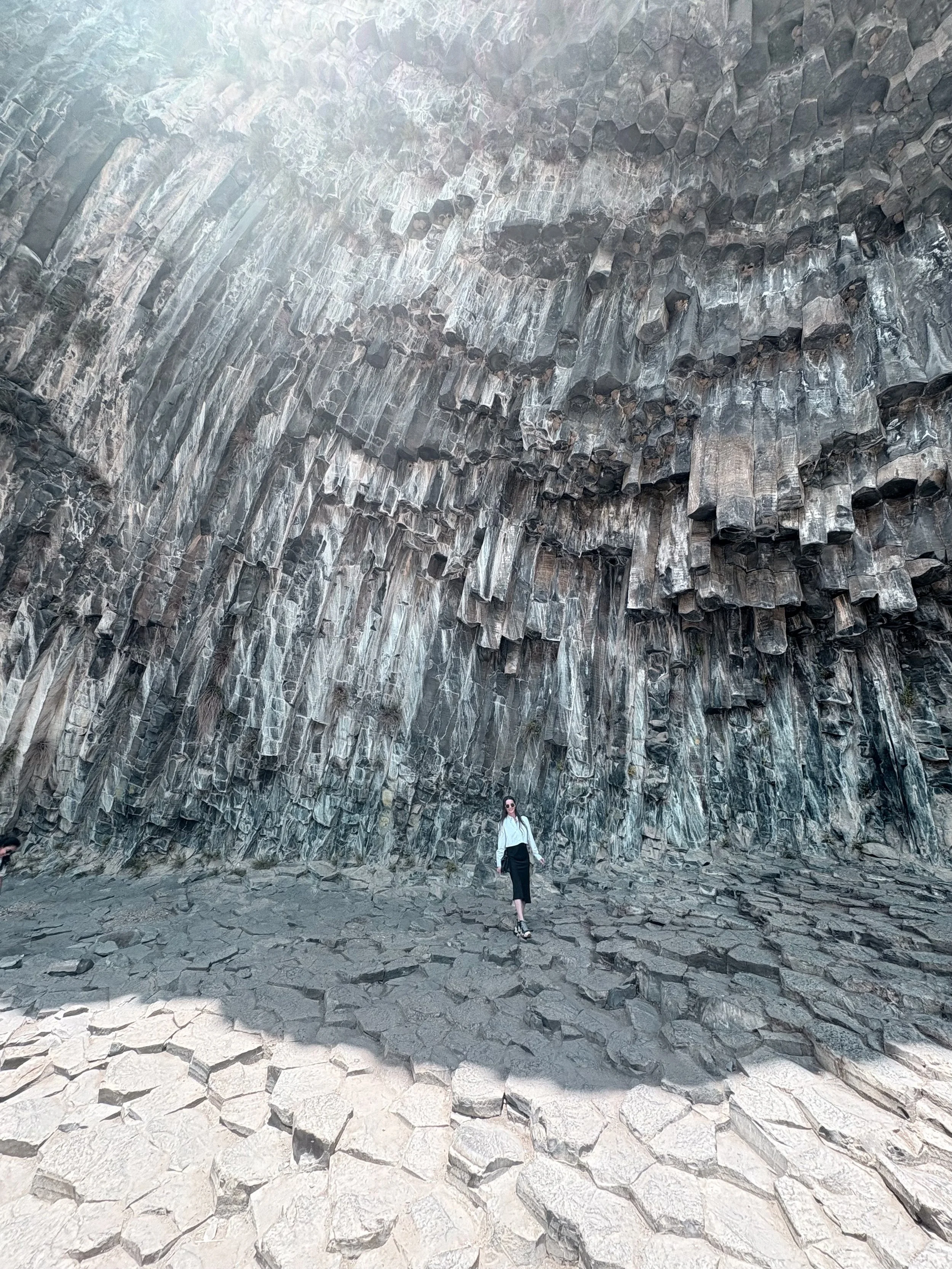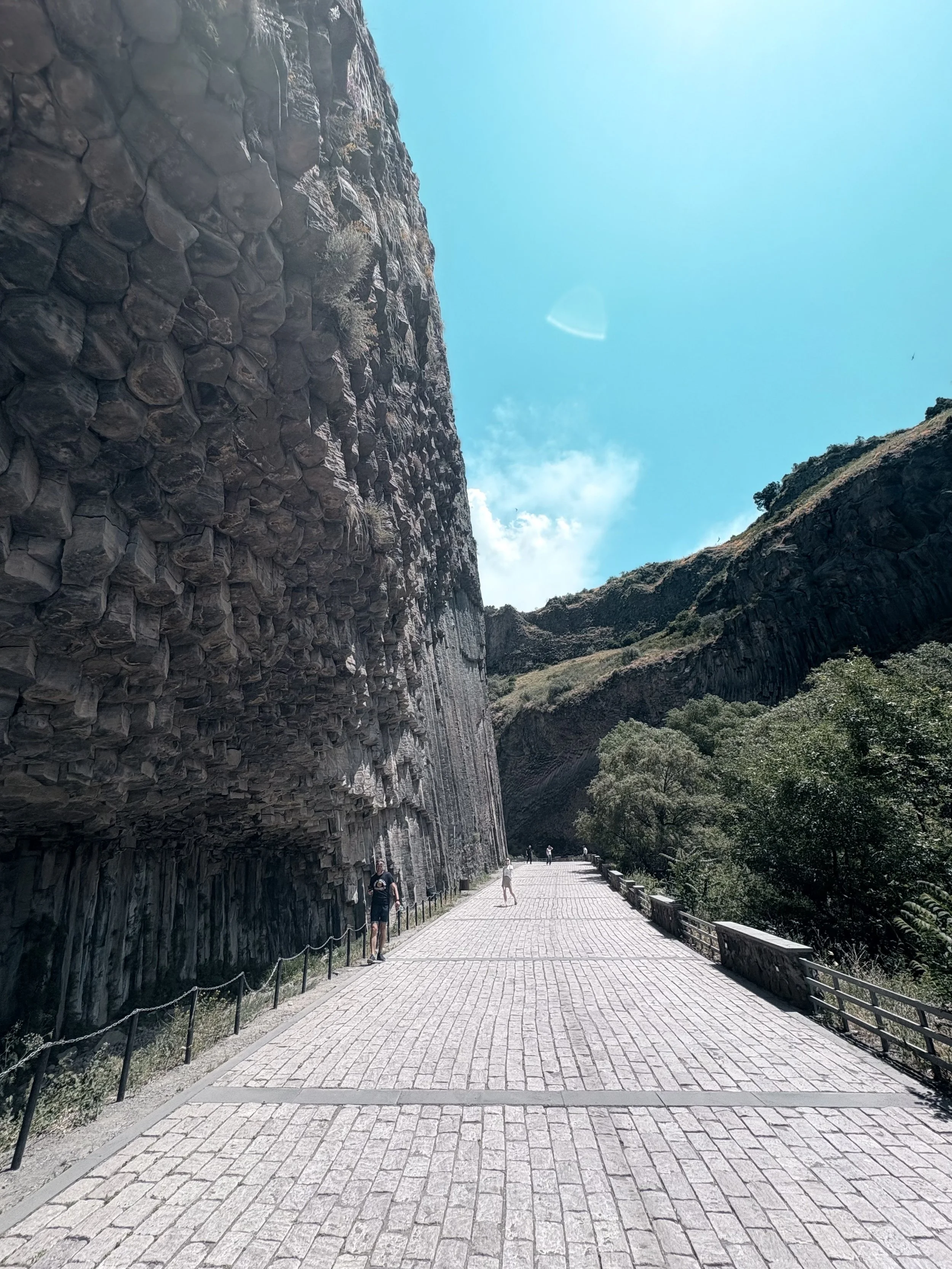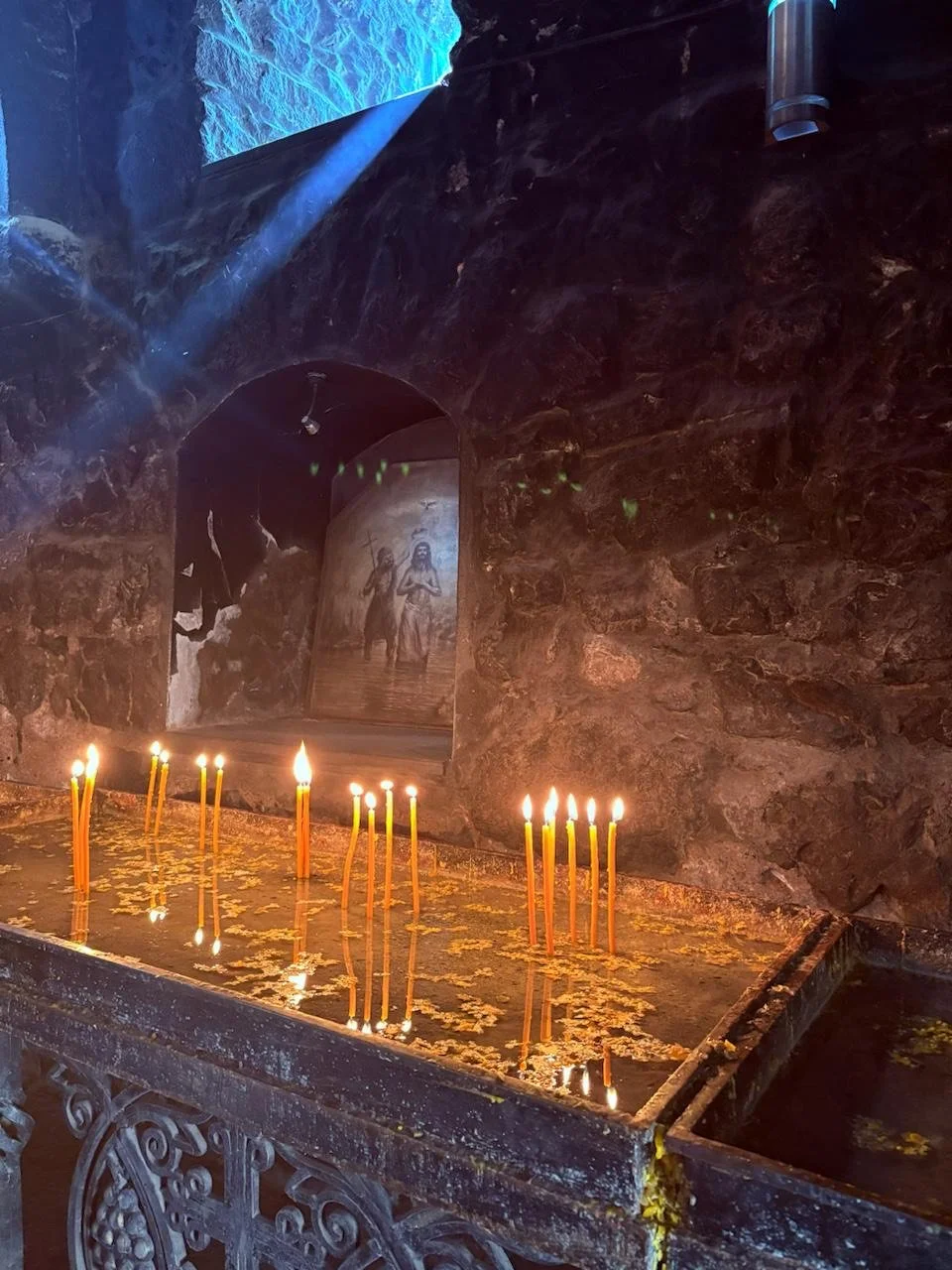Yerevan, ԲԱՐԵՎ ARMENIA !
I was planning to visit Armenia as a stop on a summer trip a year ago, but for some reason, I passed by and forgot about it.
We all have a bucket list of destinations we have dreamed of visiting one day, and even if Armenia was not on that list for me, I will tell you: YOU MUST VISIT IT !
Armenia is not considered a popular destination, even though it is a land with a millennial history, a decadent charm, and an eventful past, surrounded by lovely views and topped with incredibly delicious food and wine.
You travel there not only for beautiful, colorful pictures, but for the human experience !
Armenia with The Mariinsky Theatre
Life is a mysterious manifestation.
At one point, I wanted to visit Armenia, and then it happened naturally: I flew there for my job, which I would never have believed was possible.
So, enough talking; you can probably guess:
what did I find so special about this small country called Armenia?
Let's explore together !
Armenia is the kind of country you can visit in four to five days. From Yerevan, you can easily rent a car or find a driver. A few hours drive from the capital, you will discover the prettiest monasteries, beautiful, wild landscapes, and vineyard experiences. I would recommend two days in Yerevan to fully enjoy the city.
I noticed that young people, and anyone involved with the tourist trade, speak some English. However, as you get further out, Russian still remains the main foreign language spoken.
Armenia is one of the oldest wine-producing regions in the world. The oldest known winery was found in the Areni region, which to this day is still known for its wine production and endemic grapes.
Pomegranate wine is also a typical Armenian drink you should try during your visit.
Armenian brandy and cognac are also very popular. These products are exported abroad, the best-known brands being A.K.Z., Ararat, and Noy.
Besides wine, cuisine is a good reason to book your trip to Armenia. Their kitchen is something similar to the Georgian kitchen. Here are the meals you MUST try there. In summer, you can find many nice restaurants with terraces.
Khorovats is the typical Armenian barbecue. It can be made from lamb, pork, beef, chicken, or, less commonly, veal. Lavash and vegetables are usually served with the meat. You will see that Armenians eat a lot of meat.
Lahmacun is known as Armenian pizza; however, unlike pizza, lahmacun is not usually prepared with cheese, and the crust is thinner.
Manti is a type of dumpling usually boiled or baked, rather than steamed, and tends to be small.
Zhingyalov is a type of flatbread stuffed with finely diced herbs and green vegetables.
The first thing you must know about Armenia is Mount Ararat.
Mount Ararat, located in the Eastern Anatolia region of Turkey near the border with Armenia, is a significant cultural and national symbol for Armenians.
This dormant volcanic cone consists of two major volcanic cones: Masis, which is 5,165 meters (16,945 feet) high, and Sis, which stands at 3,925 meters (12,877 feet).
Formed by successive layers of hardened lava, tephra, pumice, and volcanic ash, the mountain has a rich biodiversity that includes numerous plant species and wildlife endemic to the region.
The last major eruption occurred in 1840.
The mountain has a profound religious significance, not only for Armenians, but also for many in the Judeo-Christian tradition, since Mount Ararat is associated with the Bible story in which Noah's Ark is said to have landed after the Great Flood.
It is also a symbol of Armenian identity and resilience, often depicted in art, literature, and national emblems.
All you need to know about the capital
With its pink tuff-stone facades, wide boulevards, and fountain-filled squares, Yerevan is a small, walkable city that warms your heart and lifts your spirits.
It is a city of parks and fountains, outdoor bars and cafes, music and laughter, independent shops and creative spaces, sprawling markets, and cute boutiques, with an overall old yet very creative vibe.
Armenia used to be part of the Soviet Union, and Yerevan's architecture reveals a strong Soviet influence. You will see more Lada cars from the 1970s than you ever thought existed.
The main things to do.
From the Sculpture Garden's collection of provocative and humorous works, climb the Cascade to admire the view of Yerevan, and if you're lucky, you'll be rewarded with a stunning view on a clear day of the Great Mount Ararat – the spot where Noah is said to have set down his Ark – rising above the rooftops.
It is possible to climb even higher above the city towards the October Revolution Memorial, Victory Park, and the Mother Armenia statue. I promise you will get a good cardio workout.
Watch the dancing fountains every evening (except Mondays) at the lively Republic Square.
Shop for antiques and souvenirs at the Vernissage market; it's a huge indoor-outdoor market selling everything from canvases and carpets to second-hand treasures and handcrafted souvenirs.
Unlock the secrets of Armenian brandy at Noy or Ararat factories.
Taste the Armenian flavors in style at Tavern Yerevan (Khorenatsi) or Քամանչա Kamacha.
Learn about Armenian history and traditions at the Genocide and Folk Art Museums.
Go church hunting and see the Blue Mosque. The last active mosque in Armenia, it is a symbol of the cordial relationship between Armenia and its neighboring country, Iran.
The Katoghike Holy Mother of God Church was consecrated in 1264, making it one of the oldest churches in the city. There is a peaceful aura about this religious place.
Visit the Matenadaran, the safekeeper of the world's largest collection of Armenian manuscripts.
Grab a drink at Lumen 1936, Yerevan's most beautiful coffee shop, featuring original painted walls, inlaid ceilings, and woodwork.
See how lavash is made at the Gum Market.
Lavash is an essential accompaniment to every meal, and the technique and ritual involved are.
UNESCO recognized it as part of the country's intangible cultural heritage.Hunt down the Yerevan street art.
What else to see in Armenia ?
The Garni Temple is a classical Hellenistic (pagan) symbol of pre-Christian Armenia, built in the II-III century AD, during the reign of the Artaxiad-Arsacid dynasty. It also served as a royal summer residence. It feels like traveling to ancient Greece.
Khor Virap is a fortified monastery of the Apostolic Church, located near the border between Armenia and Turkey. It offers the most beautiful view of Mount Ararat and the entire Ararat Valley. The site stood here for centuries before Christ's birth and was also a pagan temple first.
The remote Monastery of Geghard, resting at the entrance of the Azat Valley, was originally founded in the 4th century CE by Gregory the Illuminator.
Surrounded by towering cliffs, the monastery complex contains a number of churches and tombs that are partially carved directly into the rock.
It's not only a UNESCO World Heritage Site, but also a popular pilgrimage destination for Armenian Christians. I have never seen such a mystical and beautiful place.At an altitude of 1,900 meters above sea level, Lake Sevan is one of Eurasia's largest freshwater, high-altitude lakes and the largest lake in the Caucasus, with a basin surface area of 5,000 square kilometers.
It may have felt brisk, but I swam. The water in the month of June was 13 degrees Celsius.Built by hermit monks at the end of the 8th century on the top of the peninsula of Lake Sevan, the Sevanavank monastery used to be located on an island, separated from the shore by 3 km of transparent water, full of fish—a perfect place for medieval monastic life. The view is breathtaking, and the atmosphere is peaceful.
Symphony of Stones or "Basalt Organ" is a naturally carved monument comprised of hexagonal and pentagonal basalt columns that formed from volcanic lava cooling and crystallizing, reaching up to 50 meters in height. It feels unreal.
There are even more fortresses, caves, and monasteries to be discovered, but I wrote about the main tourist attractions and those I have visited myself. Furthermore, you can check out the Tatev Monastery, Noravank Monastery, Haghpat Monastery, Khndzoresk Cave Village, Shaki Waterfall, Zvartnots Temple, and Azat Reservoir.
Armenians are very welcoming and lovely people, and they will be happy to welcome you. They do have a real sense of hospitality, being naturally open and generous.
They are also people of great pride in their identity and heritage, but also of a real strength of heart, which I guess came from the hard times they went through as subjects of the Ottoman Empire (Armenian Genocide, 1915–1916). About 1.5 million Armenians were killed.
It's also a country of deep faith, considering that it was the first Christian country in the world, with Yerevan acknowledged as older than Rome itself.
You will find khachkars everywhere, known as the Armenian Cross, which is a distinctive sight of Armenian culture. It represents the Tree of Jesse, which is considered the tree of knowledge of good and evil and a symbol of the new and eternal covenant.
They have their own rites, church songs, and traditions.
Being Christian myself, with both Catholic and Protestant parents, I observe many different ways of expressing faith and have noticed that their rituals differ. Less vanity, more simplicity: similar to an old, clean faith, pure in its approach and closer to what I imagine the essence of the original Christian faith should be.


